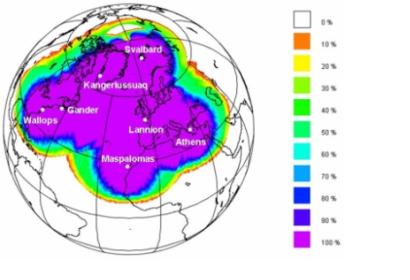For ten years the EUMETSAT Advanced Retransmission Service (EARS) has been providing real-time satellite data from areas where traditional observational data are sparse. The launch of Metop-B this year means continuity for this vital service for at least another decade.
The Regional Data Service provides users with quick access to data from EUMETSAT’s Metop and NOAA POES’ polar-orbiting satellites received via a network of direct readout stations. The network covers a large fraction of the Northern Hemisphere, as well as a significant part of the Indian Ocean. The data provided by EARS include sounder, imager and scatterometer data, primarily in support of Numerical Weather Prediction and Nowcasting at National Meteorological Services. These data sets are distributed to European and other users via EUMETCast and the GTS/RMDCN.
Christelle Ponsard, EARS System Integration Engineer, explains why the EARS service is so important: “The goal of EARS is to provide regional data to users in a minimum of time and from a range of instruments flying onboard Low Earth Orbit meteorological satellites. Having as much good observational data as fast as possible is vital to regional forecasters and to nowcasters. The EARS sounder and scatterometer services are designed to meet the requirements of the regional NWP models with a cut-off time close to 30 minutes. The EARS imager services are designed to provide the nowcasters with data in real-time, allowing for direct interpretation of the current satellite observations.The EARS system is continuously evolving to improve the existing services in terms of timeliness, data quality and geographical coverage, but also to add any additional products that would become relevant to the EARS users. For these reasons, the EARS service became very popular to our users.”

